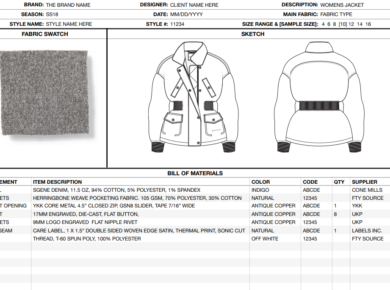Next time you are in a decent international airport, go to the nearest bookshop.
We guarantee that when you walk in, one of the first books you will see is about negotiation.
Look around a bit more, and you will see plenty of similar books on the subject.
This should give you an idea of the importance of proper negotiation. The bookshop would not stock so many negotiation titles, if they weren’t selling well. This is clearly not a good business model.
The immediate problem, is that each book claims to be the best book on negotiation. Which one do you choose to read on the plane? The honest answer. It doesn’t matter. Pick two or three.
Once you have read a few books on the subject, you will start to see common negotiation tactics in all of them (if they are any good, that is). These tactics might have different names in each book, but you will recognize them all the same.
Many people will tell you negotiators are born, not made. You can either negotiate or you cannot. This is a fallacy. While some people are naturally good at negotiation, and some are not, effective negotiation can be learned if you are willing to put in the time, and try a variety of tactics.
The key is not to try them all at once. See which tactics work for you. Once you find one that works for you, hone it, and then bring in the next tactic.
Do not try to implement all the negotiation strategies you identify in the next negotiation you are in. This will end in disaster, as there are just too many variables.
Your early negotiations might not be optimal in your eyes, and in fact you might get the short end of the stick. Always keep in mind this is a process of learning. Rome wasn’t built in a day. As long as you recognize what works and what doesn’t, there is value to be gained.

To give you a good head start to negotiation, we have identified a number of key areas that are critical in any negotiation. These are the first negotiation tactics you should focus on.
Be Prepared
Many buyers are “bad” at negotiation because they are not prepared. They think you can simply enter into negotiations with a supplier without doing any homework. These types of negotiators tend to fail miserably, and get a really bad deal, or worse, no deal at all.
Before you enter into any negotiation with a supplier, do some homework!
Determine the price range of the product you are negotiating (this type of information is easily available on the various B2B websites). This is very important, as many negotiators do not have a realistic price reference. They are simply looking to get the lowest price possible.
You need a realistic price reference as an “anchor” for your negotiations.
Remember, the price reference might be much higher than you “think” you should be paying.
This is especially true if your target price is based on some internal company metric, such as the gross margin you believe you need to achieve.
These types of metrics often have little real-world bearing. There are a multitude of other factors that affect prices that you need to take into account. Raw material cost fluctuations, exchange rates, etc.
When you are trying to achieve a metric, you are definitely oversimplifying the issue. Do this at your peril. This is not to say metrics are not important. They certainly are. No one is in business to lose money. The key is to realize their limitations, and accept they are only one factor of many to take into account when negotiating.
The scary thing is, that there are plenty of experienced negotiators that still only take internal company metrics into account. People that have been doing this for thirty plus years. This teaches you the first important lesson of negotiation.
Experience does not equal effectiveness.
Also ensure you have your next best offer available. This is the next best price from another supplier that has quoted on the same product.
Learn a bit more about the supplier you are negotiating with. Who are their competitors? Their main buyers? Their history? How long they have been in business for? etc.
It is good to start off any negotiation by bringing this type of information up in a casual, non-threatening way. It will give you a lot of credibility in the eyes of the supplier. They will get the message that you know exactly who they are and you have done your homework. Therefore, someone serious about your business.
Your preparation also includes determining things such as the maximum price you are prepared to pay (usually related to the next best offer mentioned above), the issues most important to you that might come up during the negotiation, issues you are willing to concede on, etc.
Understand the business culture
Different countries have different business cultures. It is important that you research the business culture of your supplier, as well as the business protocols.
This will also raise your standing in the eyes of your supplier.
Again, it is a signal of a serious buyer.
In Western culture, the tendency is to get straight to the point. In Chinese culture, for example, there are usually pleasantries to get out of the way, and then to ease into the actual negotiation. Once into the negotiation, the Chinese tend to raise issues in a non-direct way. This can be frustrating for someone new to the game. However, if you expect it and prepare for it, it will not be.
In Korean culture, the tendency is to strike a deal in an informal setting. The formal meetings are just for feeling each other out, and the actual deal will get struck over an informal dinner or in some other informal setting.
There are plenty of other examples of business culture.
Basically, the message here, is do some research, so you will know what to expect. This will reduce any frustration you might feel, as you understand what is going on.
Aim to create value
One of the most important points in any negotiation, is value creation. When going into a negotiation do not think only of getting the best deal for yourself, but also getting the best deal for your supplier as well. This builds trust and goodwill.
We often view negotiation as a win lose scenario. If you win, your supplier loses, and vice versa.
Consider the pie analogy. Whoever gets the biggest piece of the pie is the winner. The problem with this is twofold.
Firstly, it can create animosity. The other party might feel hard done by.
Secondly, it ignores possible scenarios where you can both benefit.
Consider the following scenario. Most suppliers have quiet periods, where they have excess production capacity for a number of reasons. During these periods the supplier still needs to cover their fixed costs, even if they have no business. If you are only focussing on the lowest price, you will ignore this. However, if you discuss these quiet periods with your supplier you can both benefit. You can compromise by placing your order during this quiet period (if possible), and the supplier can offer you a really good price, as their main concern is covering their fixed costs. This might not be realistic for all buyers, but we are using it just as an indication of what creating value is.
In this type of situation, both parties have benefitted, and there is no animosity.
Creating value requires some out of the box thinking, which leads us to the next point.
Be open minded

A common trap many negotiators fall into is having a closed mind. They feel that they need to be aggressive, and stick to their guns, as their supplier is out to fleece them for as much as possible.
The same mindset applies to most suppliers. They think the buyer is out to fleece them!
This usually results in extremely tense and hostile negotiations, which benefit neither party, and result in both parties getting a sub-par deal.
This doesn’t mean your supplier isn’t out to fleece you. However, having an open mind can negate this to a large extent.
Having an open mind means having some empathy for your negotiating partner, and listening closely to what they have to say, so you can work out what their goals are.
Empathy is not a sign of weakness, but a sign of a good negotiator.
Listening to your supplier’s concerns, and offering potential solutions, is another way to create trust and goodwill.
There are plenty of problems you can assist your supplier with, that do not negatively affect you in any way or have a cost to you.
Maybe your supplier has a problem with the forwarder they use for their business, and feel that their forwarder might let them down when it comes to your business dealings.
You, on the other hand, might have an excellent forwarder with good rates and impeccable service. Offer an introduction. This costs you nothing, and creates goodwill.
The lower rates offered by your forwarder, can be converted into a lower price for your product. Your forwarder might even offer you better rates, as you have introduced them to a new client. You can “win” twice!
Believe it or not, but it is human nature to reciprocate a favour. It is unconscious. Your introduction, might lead to your supplier being able to offer better service to all their buyers. People tend to strive for some type of equilibrium, so they will reciprocate. As mentioned, this is an almost unconscious process.
Someone does a good deed for you, and you are unconsciously required to do a good deed for them.
Think about this, and I am sure you will come up with a few personal examples. This extends to business dealings as well.
Consider contingency clauses
A contingency clause is a very powerful negotiating tool.
Let’s say you are in a negotiation with a supplier, and they will not budge on price.
You on the other hand feel that their product is overpriced by 10% based on your research.
Suppliers tend to justify their high price by making certain “guarantees”. For example, on time delivery.
Let’s take this further, and assume that you would be willing to pay 10% more for on time delivery (keeping in mind that most suppliers deliver late).
A contingency clause would be a perfect negotiation tool in this type of scenario.
Agree to pay your supplier the extra 10% if they deliver on time. If they are late, however, they will reduce the price by 10%.
If the supplier is bluffing, they will reject this clause (and come up with twenty excuses why they cannot accept the clause), which tells you that their price is not really firm, and there is room to negotiate.
This is a slightly more aggressive negotiating tactic, as it does put the supplier against the wall.
However, it all stems from the supplier justifying their higher price in a measurable way. Although it is a more aggressive technique, it is totally objective.
If the supplier agrees to the clause, you both win.
This is just one example of the use of contingency clauses. There are plenty more. Give them some thought.
We really hope this article has given you a bit more insight into the often murky world of business negotiation, if you are new to it. Even if you are a seasoned negotiator, we hope the article offers some new ideas to add to your negotiation arsenal.

Look out for part 2 of this article. This will be our next blog. In the meantime, experiment with some of the tactics mentioned. We are sure they will add value to your negotiations with suppliers.






